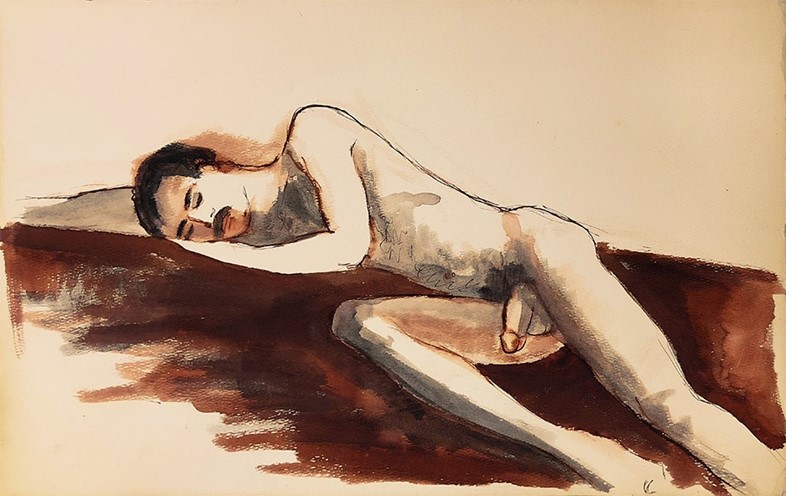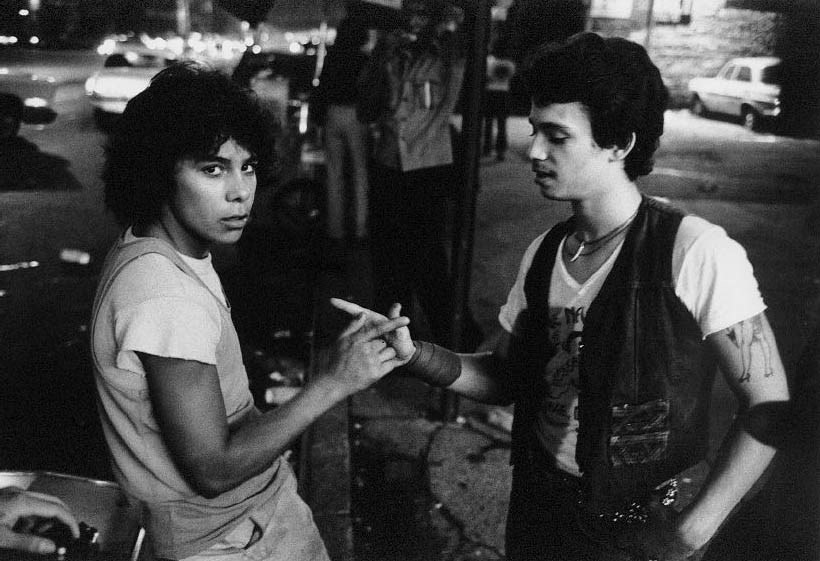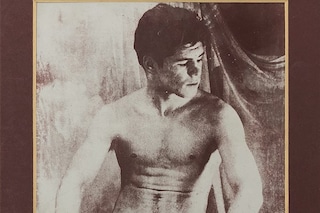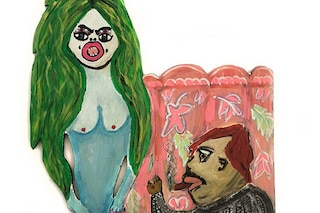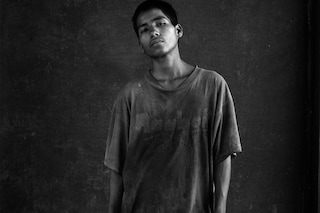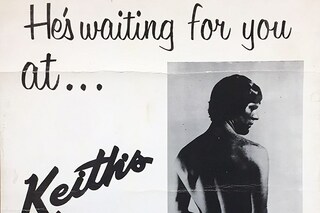Five artists who brazenly captured hustling on the streets for a living
At age 17, artist Mark Morrisroe was shot in the back. It was 1976, two years after he had started working as a hustler under the pseudonym of Mark Dirt, when a disgruntled client left a bullet in Morrisroe’s spine forever. Much like the eternity of the bullet, the shooting had a permanent impact on Morrisroe’s art where he would take photos of sex workers and X-Ray’s of his chest up until his death from Aids in 1989.
Morrisroe’s trajectory is a symbol for how art and sex work intertwined at the time – the subject of New York gallery ClampArt’s latest show Rough Trade: Art and Sex Work in the Late 20th Century. Artists who needed money to survive, like Morrisroe and Aids activist David Wojnarowicz, commonly turned to hustling as a way of life, while others who were immersed in America’s far-reaching sexual subcultures, like photographers Larry Clark and Philip Lorca diCorcia, documented their surroundings from the outside.
“The symbols, imagery, and iconography of those directly involved in the sex industry offer a special window into the times,” explains the show’s co-curator Greg Ellis. “That being said (for those not directly involved in hustling) many artists during these decades found themselves closely positioned to friends and colleagues with histories of sex work. Their perspectives are vital records of this rapidly shifting landscape where art and sex were entering into popular culture. Artists, like sex workers, tend to find themselves marginalised on the fringes of society. I believe this outsider status brings a familiarity and authenticity to the subject.”
“Their perspectives are vital records of this rapidly shifting landscape where art and sex were entering into popular culture” – Greg Ellis
Excelled by the sexual revolution of the 1960s, as well as gay and women’s liberation movements, the boundaries of sex were being pushed, hard, by those wanting to progress sex out of taboo. Over 30 years later, Rough Trade is a reminder that rights for sex workers still have a long way to go. “While great strides have been made concerning freedom of sexual choice between consenting adults over the past few decades, sex workers continue to be targeted and imprisoned,” states Ellis. “Also, with the advances in understanding the impact of trauma upon survivors of various types of exploitation and abuse, new insights can be gleaned from the imagery, activism and iconography of these artists.”
In light of Rough Trade, here are six artists who documented sex work in late 20th century America.
MARK MORRISROE, PERFORMANCE ARTIST AND PHOTOGRAPHER
Dubbed by Nan Goldin as Boston’s first ever punk, Mark Morrisroe was a true radical who was always determined to break free from the social markers that oppressed him since birth. Born to a drug-addicted mother in Massachusetts, Morrisroe fled home at the age of 15, where he began hustling to buy make-up, food, and most importantly, art supplies. He then decided to attend the School of the Museum of Fine Arts, Boston, where he worked alongside Goldin and photographer Philip-Lorca diCorcia. It was during his degree that he published Dirt Zine (a publication directly influenced by his time as Mark Dirt). “Morrisroe's early experiences of hustling inform his entire oeuvre,” explains Ellis. “The trauma associated with underage sexual exploitation was compounded by the very real trauma of having been shot by an angry John. His use of x-rays, photographs from his actual life of hustling and those that include his Johns all provide a glimpse into the psyche of a sex worker rarely seen in the arts.”
Morrisroe’s experiences are alive in his self-portrait, “Untitled (Self Portrait Standing in the Shower),”1983, where he stands naked in the mirror at age 22. The image is taken in a style that Morrisroe became synonymous for called ‘sandwich prints’, which are enlargements of double negatives of the same subject layered on top of one another to produce a painterly effect. In 1989, Morrisroe sadly passed from a battle with Aids – a struggle that impacted many queer hustlers at the time.
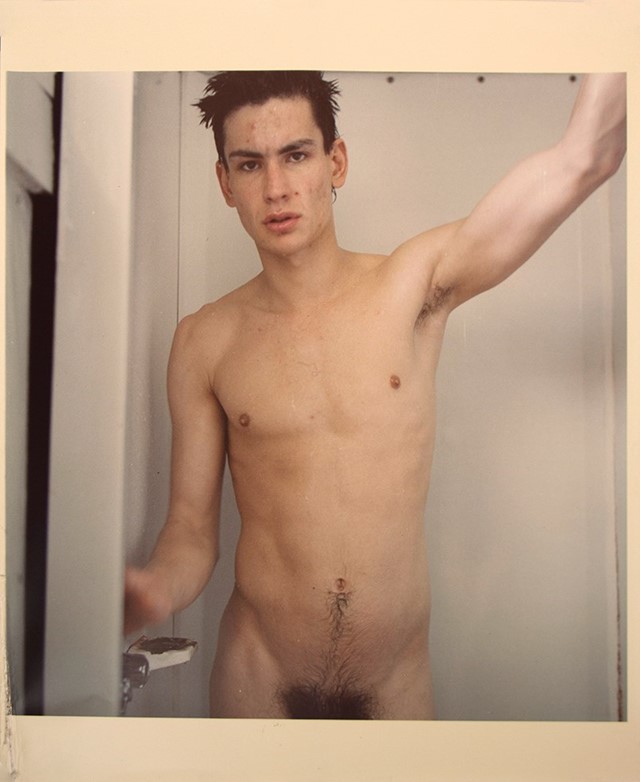
DAVID WOJNAROWICZ, AIDS ACTIVIST AND MULTIDISCIPLINARY ARTIST
David Wojnarowicz is one of the American history’s boldest Aids activists. A star of the New York’s East Village art scene, Wojnarowicz was a refugee from a violent family home who later became a Times Square hustler to fill the void of love he lacked from his divorced parents. “I’m still a piece of meat like something in the Fourteenth Street markets swinging from stinking hooks in the blurry drag queen dusk,” writes Wojnarowicz on his time hustling, in a book of short monologues, called The Waterfront Journals. “Maybe a hundred dollars to my name, no place to live, and I can’t hustle anymore. I’m trying to keep my body beyond the deathly fingers of my past but I’m fucked up bad never learned shit, how to create structures other than chaos.”
It seems fitting that the book is titled The Waterfront Journals, seeing as Wojnarowicz spent a lot of his time launching an art project at Pier 34. The piers were synonymous with male cruising spots, and Wojnarowicz painted many erotic wall murals there, including one of a cow gagging, later shot by Peter Hujar for the Village Voice in 1983, now featured in Rough Trade. Another leading Wojnarowicz image in the show is a Wojnarowicz magazine clipping “Untitled (Between C & D)," 1985, where the artist delivers another poetically harrowing monologue. This one addresses constitutional discrimination against queer people, one that would put queer hustlers in grave danger, such as the time Wojnarowicz was beaten on the waterfront as a teen hustler for being gay.

LARRY CLARK, PHOTOGRAPHER
If Wojnarowicz was a Times Square hustler around 15 years later, he very well may have appeared in influential photographer Larry Clark’s 1983 series, Teenage Lust. The series, which took Clark ten years to complete because of a heroin addiction, follows the erratic state of being a young American teenager in a society that both glorifies and commodifies its teens. As a prelude to Clark's soon to be obsession with the way teens live in his film Kids, the series features black and white self-portraits of Clark and his friends in his hometown of Tulsa before focusing on the vulnerability of being a teenage street hustler in early 80s New York. Within the images featured in Rough Trade, we see the comradery of hustling as two sex workers share a handshake, as well as the trade’s loneliness. Ultimately, what we realise is the sacrifice young men had to make at the time in order to survive. Speaking of the graphic rawness of his work, Clark told The Guardian that when he first saw the shots, he was equally as shocked as everyone else: “I remember thinking, 'I have either got to burn all the negatives and shoot myself, or go down to LA and try and get (them) published.”
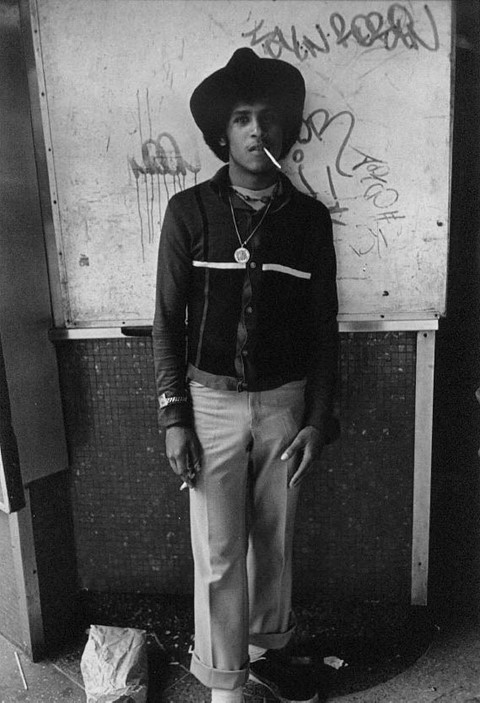
PHILIP-LORCA diCORCIA, PHOTOGRAPHER
Turning the lens of the hustler away from realism is photographer Philip-Lorca diCorcia, who is renowned for staging images that use theatricality as a form of social commentary. From 1990-1992, diCorcia shot his Hustlers series in Hollywood against a backdrop of the Aids epidemic that saw the everyday degradation of queer people. “ It was...the HIV/ Aids period,” diCorcia told Dazed. “My brother was gay and had died of Aids in 1989, so this was just the year after. It made sense. There was something conceptually perfect about the whole idea and the indexing of these people – them being products in a way, involving self-promotion as an image, which fits so well with Hollywood.”
In this sense, diCorcia used the series as a way to clap back at discrimination against queer artists, such as Robert Mapplethorpe who had government funding cut because of the queer subject matter of his work. In response, diCorcia used the same government funding to shoot the queer male hustlers of Boystown in West Hollywood. He would use the money to pay the hustlers a small fee to photograph them at set locations like motel rooms, street corners, and parking lots. “The series was almost meant to be a catalogue because these men have commoditised themselves out of desperation – and they’re in Hollywood, which makes commodities out of people anyway.”
“There was something conceptually perfect about the whole idea and the indexing of these people – them being products in a way, involving self-promotion as an image, which fits so well with Hollywood” – Philip-Lorca diCorcia
JANE SHERRY, PAINTER
“Jane Sherry was a topless dancer who has spoken eloquently about her struggles and employment in pre-Disney Times Square strip clubs,” says Ellis of one of the show’s only female artists. As one of the first women in Collaborative Projects (a 1980s New York artist group) to work as a topless dancer, for Sherry, performing was a form of feminism where she could make enough money to live as an artist while living out her politics. “All of the pieces included in this show were originally shown in the groundbreaking 1980 Times Square Show, which was held in an abandoned massage parlour,” explains Ellis. Recounting her role in the show, Sherry says that her work “fit in with my vision of myself as a sexually independent and powerful woman. It was a vehicle in which to explore sexual dynamics and the ways in which they contributed to the objectification of women. A big theme at that time in my artwork was the dynamic between the archetypes of ‘The Virgin’ and ‘The Whore’ as well as exploring various myths of our patriarchal culture.”
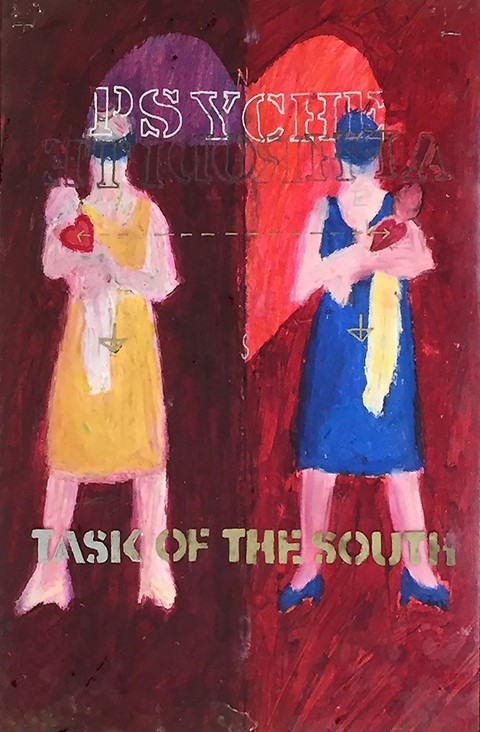
KENNY BURGESS, PAINTER
Kenny Burgess was a painter and illustrator whose works were a key part of New York’s 1980s counter-broadway scene. “Burgess was part of a generation of artists and gay men that were targeted by the local police, legislated against and as a result had to live in a shadow world of criminality merely to congregate and live freely,” explains Ellis. “He was an integral part of the Caffe Cino, a radical queer performance space that spawned not only Off-Off-Broadway theatre but was the cradle of gay life as we know it today. They accomplished this through police and organised payoffs alike.“ A dishwasher at Caffe Cino, Burgess created the posters for the theatre productions in such an abstract way that police couldn’t identify what they were, but those in the know could understand. These were the methods that marginalised queer artists at the time had to go to create. “In the midst of this murky cauldron of creativity and crime, the plays often employed local hustlers as extras, and a number of the male participants engaged in sex work to finance their stage productions. Burgess kept a secret file of sketches he’d make of the hustlers he brought home.” In 1989, Burgess died of Aids, as did many of the Caffe Cino alumni. “The Cino was the cradle of modern gay culture, informing future generations with its fiercely independent spirit, rebelliousness, and creative anarchy,” states the ClampArt website.
Rough Trade: Art and Sex Work in the Late 20th Century is on at New York's ClampArt until September 22. You can find out more here
